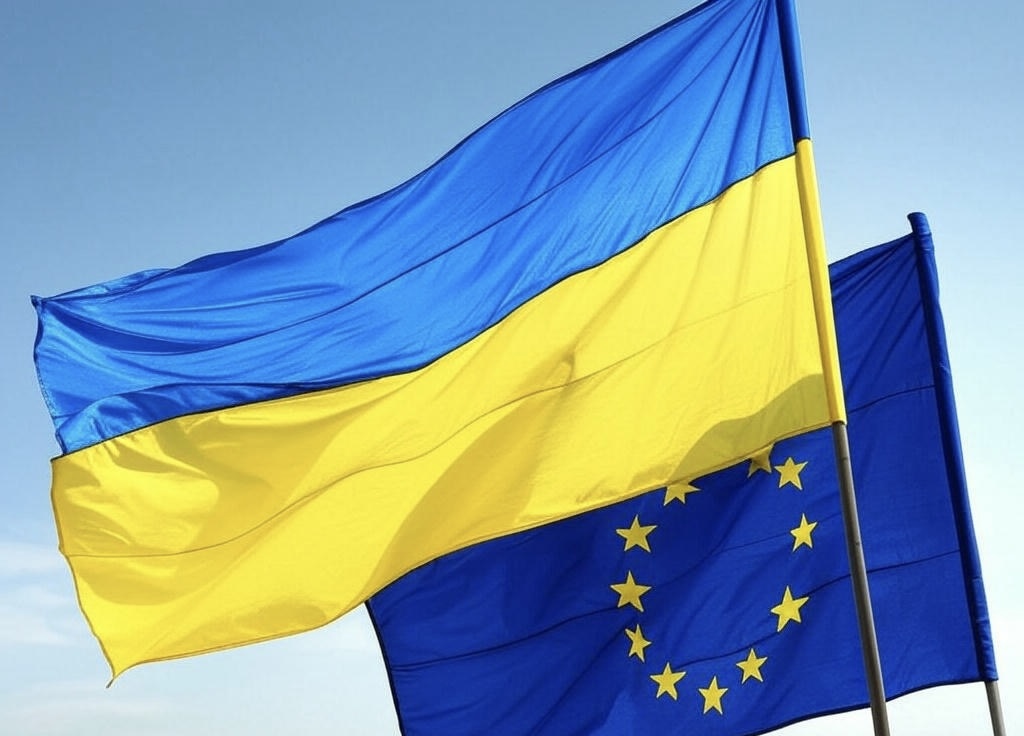Executive Summary
The European Union (EU) is advancing efforts to integrate Ukraine into the single market, with recent reports indicating that this process may be tied to a broader peace settlement. If realized, this integration would provide Ukraine with preferential access to the EU’s economic framework, boosting its economic recovery and aligning key industries, particularly defense, with European markets. While formal accession remains a long-term goal, the EU appears willing to extend sectoral integration as a strategic measure to stabilize Ukraine and strengthen European security.
This report outlines the current state of Ukraine’s economic alignment with the EU, key financial and regulatory mechanisms driving integration, and the potential implications for investors, businesses, and policymakers.
1. Introduction
The EU single market is a core economic pillar, facilitating the free movement of goods, services, capital, and people across member states. For Ukraine, deeper integration into this market would provide significant economic benefits, particularly in light of the ongoing war. The EU has supported Ukraine through various trade agreements, financial assistance programs, and institutional partnerships aimed at aligning Ukrainian industries with European standards.
Recent reports suggest that Ukraine may receive privileged access to the single market as part of a negotiated peace settlement. This move would be unprecedented, granting Ukraine economic advantages without full EU membership while reinforcing European security by strengthening Ukraine’s defense sector.
2. Current Economic and Trade Integration Efforts
Ukraine’s economic integration into the EU has progressed through several key frameworks:
2.1. Deep and Comprehensive Free Trade Agreement (DCFTA)
Signed in 2014 and in effect since 2017, the DCFTA facilitates trade between Ukraine and the EU by reducing tariffs and aligning regulatory standards. The agreement has led to increased Ukrainian exports to the EU, particularly in agriculture and raw materials.
2.2. Single Market Programme (SMP)
In 2023, Ukraine joined the EU’s Single Market Programme, which provides financial support for small and medium-sized enterprises (SMEs) and facilitates market access. This program strengthens Ukraine’s private sector and enhances its ability to compete within the European economy.
2.3. Business and Industrial Support Initiatives
• The EU has launched targeted funding programs to assist Ukrainian SMEs and war-affected industries.
• A High-Level Industrial Dialogue has been established to align Ukraine’s manufacturing and industrial policies with EU regulations.
• Strategic partnerships in raw materials and energy security are being developed to integrate Ukraine into the European supply chain.
These mechanisms demonstrate the EU’s commitment to embedding Ukraine within its economic framework, even before full membership discussions commence.
3. Strategic Implications of Single Market Integration
3.1. Economic Recovery and Investment Opportunities
Gaining access to the single market would significantly enhance Ukraine’s economic prospects by:
• Increasing foreign direct investment (FDI) as businesses gain confidence in Ukraine’s regulatory alignment with the EU.
• Boosting industrial exports, particularly in agriculture, energy, and defense.
• Enhancing financial stability through EU-backed economic programs.
For investors, early entry into Ukrainian markets could present high-reward opportunities in infrastructure, logistics, and defense manufacturing.
3.2. Defense Sector Integration and Security Implications
Reports suggest that Ukraine’s defense industry, particularly in drone production and military technology, would be prioritized in any integration agreement. This alignment would:
• Strengthen the EU’s defense capabilities by incorporating Ukraine’s advanced military technology into European supply chains.
• Provide Ukrainian defense manufacturers with tariff-free access to European markets.
• Support long-term security commitments between Ukraine and the EU.
3.3. Political and Legal Challenges
While the EU is willing to offer selective access to Ukraine, challenges remain:
• Full membership requires legal and institutional reforms, particularly in anti-corruption measures and regulatory alignment.
• The EU must navigate political sensitivities among member states that may resist partial integration without a clear path to full accession.
• The negotiation process will require balancing economic benefits with geopolitical considerations, particularly regarding relations with Russia.
4. Potential Market Risks and Considerations
For businesses and investors evaluating opportunities in Ukraine’s evolving economic landscape, key risks include:
• Regulatory Uncertainty: While EU integration efforts are accelerating, the absence of a formal accession timeline creates uncertainty in long-term regulatory commitments.
• Geopolitical Volatility: The ongoing conflict remains a significant factor in Ukraine’s economic stability. Any market entry strategy must consider potential disruptions.
• Sector-Specific Restrictions: Integration may initially be limited to select industries, requiring careful analysis of which sectors will benefit most from EU alignment.
Despite these risks, Ukraine’s gradual integration into the EU market represents a transformative economic shift, creating long-term growth potential in key industries.
5. Conclusion and Outlook
The EU’s push to integrate Ukraine into the single market—whether as part of a peace settlement or a broader economic strategy, represents a pivotal moment in European economic and geopolitical realignment. If successful, this process will drive investment into Ukrainian industries, enhance trade flows, and strengthen regional security.
For financial institutions, multinational corporations, and investors, Ukraine’s evolving status presents both opportunities and risks. Strategic positioning in key sectors such as defense, infrastructure, and energy could yield substantial long-term returns, while careful risk assessment remains essential.
As negotiations progress, further clarity will emerge on the exact mechanisms of Ukraine’s integration. Businesses and investors should closely monitor developments to align their strategies with emerging opportunities in the region.
Disclaimer: Important Legal and Regulatory Information
This report is for informational purposes only and should not be construed as financial, investment, legal, tax, or professional advice. The views expressed are purely analytical in nature and do not constitute financial guidance, investment recommendations, or a solicitation to buy, sell, or hold any financial instrument, including but not limited to commodities, securities, derivatives, or cryptocurrencies. No part of this publication should be relied upon for financial or investment decisions, and readers should consult a qualified financial advisor or regulated professional before making any decisions. Bretalon LTD is not authorized or regulated by the UK Financial Conduct Authority (FCA) or any other regulatory body and does not conduct activities requiring authorization under the Financial Services and Markets Act 2000 (FSMA), the FCA Handbook, or any equivalent legislation. We do not provide financial intermediation, investment services or portfolio management services. Any references to market conditions, asset performance, or financial trends are purely informational and nothing in this report should be interpreted as an offer, inducement, invitation, or recommendation to engage in any investment activity or transaction. Bretalon LTD and its affiliates accept no liability for any direct, indirect, incidental, consequential, or punitive damages arising from the use of, reliance on, or inability to use this report. No fiduciary duty, client-advisor relationship, or obligation is formed by accessing this publication, and the information herein is subject to change at any time without notice. External links and references included are for informational purposes only, and Bretalon LTD is not responsible for the content, accuracy, or availability of third-party sources. This report is the intellectual property of Bretalon LTD, and unauthorized reproduction, distribution, modification, resale, or commercial use is strictly prohibited. Limited personal, non-commercial use is permitted, but any unauthorized modifications or attributions are expressly forbidden. By accessing this report, you acknowledge and agree to these terms-if you do not accept them, you should disregard this publication in its entirety.



